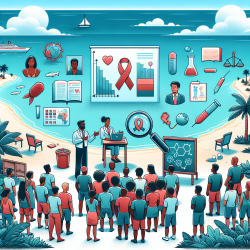The recent study "Where Are We on the Animal Welfare Map? Using GIS to Assess Stakeholder Diversity and Inclusion" provides valuable insights into how Geographic Information Systems (GIS) can be leveraged by animal welfare organizations (AWOs) to improve service delivery and stakeholder engagement. This blog post explores the key findings of the study and offers practical advice for practitioners looking to enhance their skills and organizational effectiveness.
The Power of GIS in Animal Welfare
GIS is a powerful tool that allows organizations to analyze spatial data to identify patterns and trends. In the context of animal welfare, GIS can be used to map out areas that are well-served and those that are under-served by AWOs. The study conducted by the Toronto Humane Society (THS) utilized GIS to perform a spatial analysis of stakeholder groups such as adopters, surrenders, public veterinary service clients, volunteers, and foster parents. The findings revealed significant disparities in service provision across different geographic areas.
Key Findings
- Under-served Areas: The study identified that areas in the north-west and north-east corners of Toronto, as well as surrounding cities in the Greater Toronto Area (GTA), were generally under-served.
- Socioeconomic Correlations: There was a notable correlation between certain socioeconomic factors and stakeholder engagement. For instance, higher residential instability was associated with increased adoption rates, while higher ethnic concentration correlated with decreased adoption rates.
- PVS Clients: Public Veterinary Service clients were more prevalent in areas with higher residential instability, material deprivation, and Indigenous populations.
Practical Applications for Practitioners
The insights from this study provide a roadmap for AWOs looking to improve their reach and effectiveness. Here are some practical steps practitioners can take:
- Conduct Spatial Analysis: Implement GIS tools within your organization to map out service areas and identify gaps. This will help in targeting interventions more effectively.
- Diversify Stakeholder Engagement: Use the data from GIS analysis to develop strategies that engage under-represented communities. Tailor programs to meet the unique needs of these groups.
- Enhance Data Analytics Skills: Consider training staff or hiring experts in data analytics to better understand and utilize complex datasets.
- Create Targeted Outreach Programs: Develop outreach initiatives focused on areas identified as under-served. Consider mobile clinics or satellite locations to increase accessibility.
The Path Forward
The use of GIS in analyzing stakeholder diversity and inclusion is not just a theoretical exercise but a practical tool that can lead to real-world improvements in animal welfare services. By embracing these methodologies, practitioners can ensure that their organizations are not only effective but also equitable in serving diverse communities.
The study underscores the importance of using data-driven approaches to address systemic barriers and improve service delivery. As AWOs continue to evolve, integrating GIS into their operational strategies will be crucial for fostering inclusivity and enhancing overall program effectiveness.
Where Are We on the Animal Welfare Map? Using GIS to Assess Stakeholder Diversity and Inclusion










